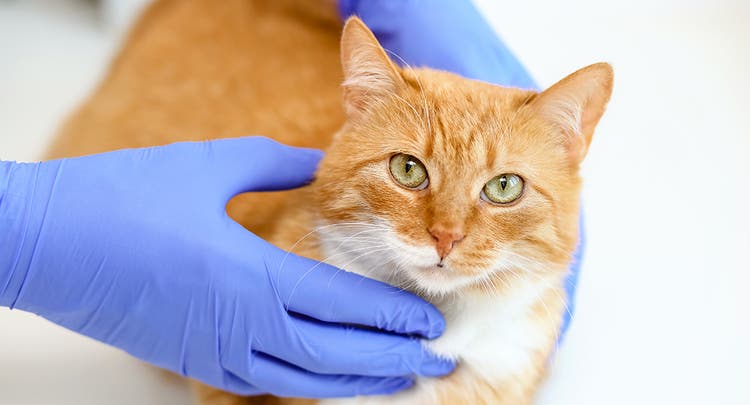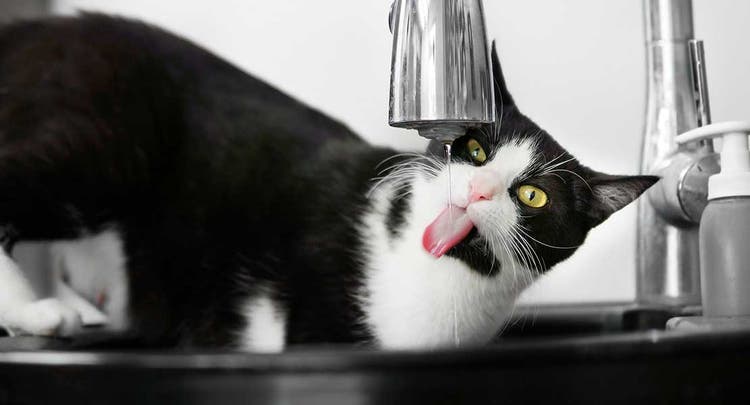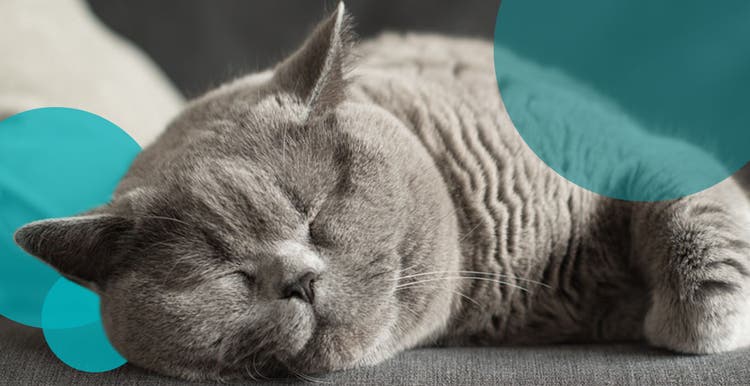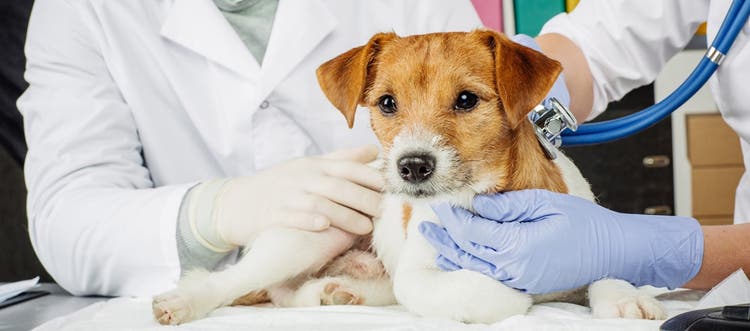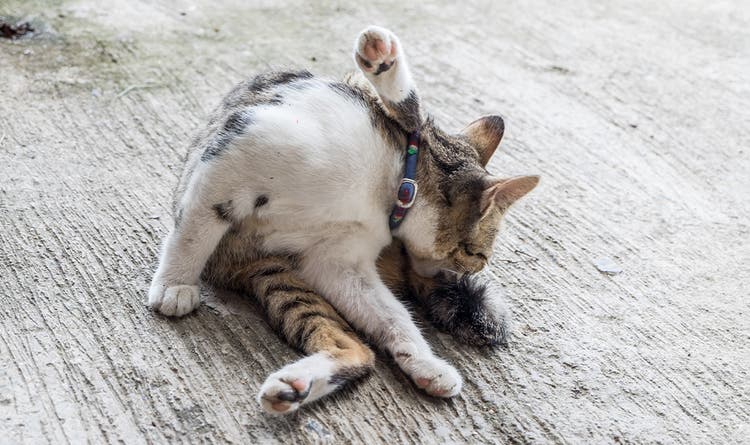Tips for managing feline diabetes for life.
Receiving the initial diagnosis of feline diabetes can feel overwhelming, but with some know-how and the right management strategies, it is possible to provide proper care and help your cat live a long, happy life.
Managing the disease with an eye toward the long-term is important to keep your cat’s blood glucose (sugar) levels stable and prevent complications. This involves a combination of strategies, including regular veterinary care, complementary therapies and lifestyle adjustments. Here are three effective ways to help you manage your cat’s condition, now and in the future.
1. Explore Complementing Therapies for Feline Diabetes
In addition to feline diabetes treatments like insulin therapy or non-insulin treatment, diet and exercise play a valuable role in managing the disease. Providing a consistent, high-quality, low-carbohydrate diet can help regulate blood sugar levels. Exercise can help your cat maintain a healthy body weight, which reduces the severity of, and complications resulting from, feline diabetes.
Insulin is a critical hormone produced in the pancreas. This hormone is essential to allow the body to utilize the glucose (sugar) in the blood as an energy source. Obesity is linked to insulin resistance, a condition in which the body resists the beneficial effects of its natural insulin production. Helping a cat lose weight through diet and exercise can reduce insulin resistance and help your cat live a healthier, more active lifestyle.
Feline Diabetes and Diet
Your veterinarian is the best resource to help you decide on a diabetic diet. Here are some key considerations.
- Low-carbohydrate content: Cats are meat eaters, and their bodies are not designed to handle high levels of carbohydrates. A low-carb diet can help minimize spikes in blood sugar levels. Look for cat foods specifically made for diabetic cats, or labeled "diabetic cat food" or "low-carb."
- High-quality protein: Cats require high-quality animal-based protein for their nutritional needs. Choose cat foods that list meat or meat meals as the primary ingredient. Choose a food made by a reputable company with extensive experience and research in formulating diets for cats.
- Moderate fat content: Fat provides essential fatty acids and energy for cats. However, excessive fat intake can contribute to obesity, which can worsen diabetes. Aim for moderate fat levels in the diet.
- Consistent feeding schedule: Establish a regular feeding schedule to help regulate blood sugar levels. Dividing the recommended daily portion into several small meals may help regulate spikes in blood sugar.
- Wet or moist food: Wet or moist food may be preferred for diabetic cats as it has a higher water content and can help maintain hydration. Additionally, wet food often has a lower carbohydrate content compared to dry kibble.
- Treats for diabetic cats: While treats can be a source of joy for cats, it is essential to choose appropriate options if they have diabetes. Look for low-carbohydrate treats specifically designed for diabetic cats, or consider offering small portions of low-carbohydrate foods as occasional treats.
Always consult your veterinarian for specific dietary recommendations tailored to your cat's individual needs and health condition. They can provide guidance on suitable commercial cat food brands or may suggest a homemade diet if appropriate. Regularly monitoring your cat's weight, blood glucose levels and overall health is crucial in evaluating the effectiveness of a diet and making any necessary adjustments.
Feline Diabetes and Exercise
Here are some tips to help you encourage physical activity for your cat:
- Playtime: Engage your cat in interactive play sessions using "active" toys like balls, toy mice or feather teasers to trigger your cat's natural instincts to chase, pounce and play. Set aside dedicated playtime each day to stimulate their natural hunting instincts and encourage movement. Vary the types of toys and play activities to keep them interested.
- Climbing opportunities: Cats love to climb and explore their vertical space. Provide cat trees, shelves or perches where they can climb and jump. This not only promotes exercise but also satisfies their natural curiosity.
- Environmental enrichment: Create a stimulating environment by offering scratching posts, tunnels, puzzle toys or interactive feeders. These activities encourage mental stimulation and physical movement as your cat explores and interacts with their surroundings.
- Outdoor time (if safe): If your cat is allowed outdoors, provide a safe and supervised outdoor environment. Ensure they have access to a secure, enclosed space where they can engage in natural behaviors. This can include designated outdoor enclosures or supervised walks on a harness and leash.
- Food puzzles: Incorporate food puzzles or treat-dispensing toys into your cat's daily routine. These toys require your cat to work for their food, stimulating their mind and body while providing a rewarding challenge.
- Establish a consistent exercise routine: Cats thrive on routine, so try to schedule playtime and exercise sessions at similar times each day. This helps create a sense of anticipation and ensures they get regular physical activity.
- Consider a feline companion: If your cat is sociable and gets along well with other cats, introducing a compatible feline companion can provide built-in play and exercise opportunities, from chasing to wrestling.
Remember that the amount of exercise your cat needs can vary based on their age, health and individual preferences. Always observe your cat's comfort level and consult your veterinarian for specific exercise recommendations.
2. Monitor Your Cat’s Blood Sugar
Monitoring your cat's blood sugar levels is vital for managing feline diabetes. With your veterinarian’s guidance, you can do so at home using a glucometer, a handheld device that measures blood glucose levels from a small sample of blood. Alternatively, many veterinarians use continuous glucose monitors, which can monitor glucose levels continuously for up to two weeks.
Handheld glucometers are widely available at pharmacies, pet supply stores and online retailers. Make sure to choose a glucometer specifically designed for cats, as their blood glucose levels differ from those of humans. Ask your veterinarian to learn how to choose and use a glucometer correctly and where to find one.
3. Be Aware of Diseases or Health Issues Related to Feline Diabetes
Diabetic cats are prone to developing certain health issues, including:
- Diabetic neuropathy: This condition affects the nervous system and can cause weakness or loss of coordination in the hind limbs. If you notice your cat having difficulty walking or jumping, talk to your veterinarian.
- Appetite loss: Cats with diabetes may experience a decreased appetite, which can affect their overall health. If your cat's appetite changes significantly, it is important to consult your veterinarian to address the underlying cause.
- Hypoglycemia: Hypoglycemia, or low blood sugar, can occur in diabetic cats. Signs may include extreme lethargy, weakness, disorientation, trembling and seizures. If you suspect your cat is experiencing hypoglycemia, seek veterinary care immediately.
- Gastrointestinal problems: Diabetic cats may be prone to gastrointestinal issues such as vomiting or diarrhea. If these signs persist or worsen, schedule a vet appointment.
- General malaise: Cats with diabetes simply may not feel well or act as they once did. They may very well be lethargic or prone to hiding,
Living with a diabetic cat requires patience and persistence. To proactively manage your cat's diabetes, you’ll need to adhere to veterinary recommendations, monitor blood glucose levels regularly and make necessary adjustments to their diet and lifestyle. Regular check-ups and open communication with your veterinarian are crucial in helping your cat live their best life.
